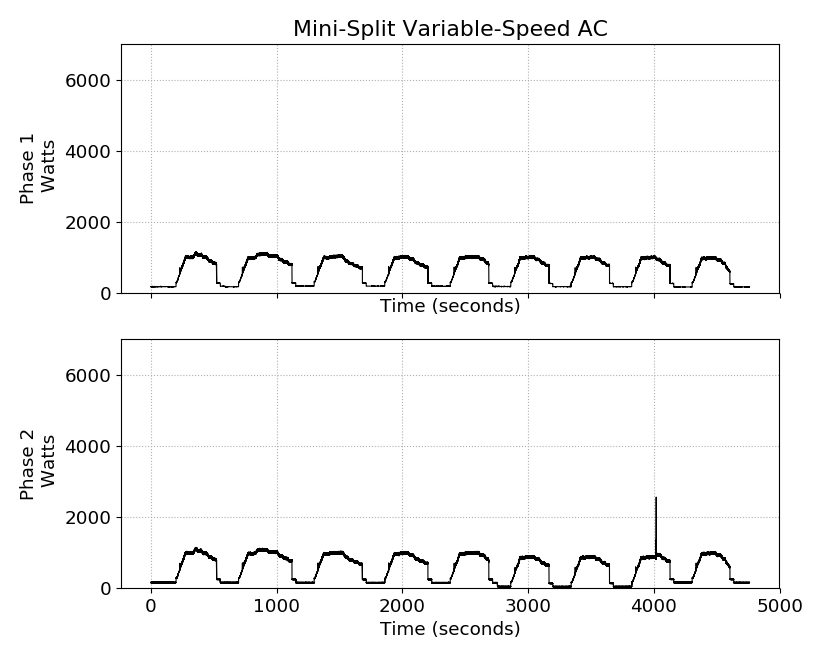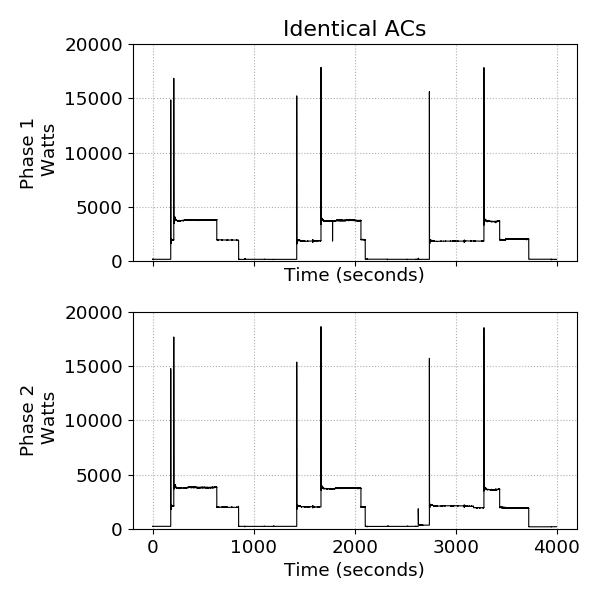Has Sense found your air conditioner? Air conditioners are essential to summer comfort, and they are a big chunk of most home’s electricity bills, so we’ve been taking a deeper dive into their hidden patterns. The Sense engineering team has recently analyzed all sorts of air conditioners and developed sophisticated algorithms to detect them. We talked recently with Mahesh Shastry, a data scientist at Sense, to learn more about how Sense finds air conditioners. Here’s what he had to say.
Can you tell us how Sense is able to detect air conditioners?
Before telling you about our approach, let’s start with the most common types of ACs in peoples’ homes. There are three main types. First is window air conditioners, running at 120V. The second category is central HVAC systems, nearly all of which are 240V systems that consist of a cooling unit and a ducted system that blows the cool air to various parts of your house. The third category is mini-splits, which usually use 240V. They have two components: an air-handler, typically installed on the room’s wall, and a condenser unit outside the house that forces cold refrigerant through a tube in the wall to the air-handler.
In all three types of systems, there are two major components: a fan with a motor and a compressor that cools the air. When Sense is detecting air conditioners, it looks for the compressor coming on because it is an inductive motor with an electrical pattern or “signature” that’s quite distinctive. It also uses the fan’s motor to help identify the air conditioner.
There are lots of other motors turning on and off in the average home. So we look for other clues to identify exactly which kind of motor it is. Since Sense measures both “phases” coming into the house, it can look for motors on both phases or on one phase. If a motor’s energy signature is on just one phase, it’s likely to be a fridge, window AC or dehumidifier. If it’s on both phases, it could be a central AC, pool pump, or well pump.
Now Sense’s task is to figure out which device is turning on. The cycling nature of the device hints at what kind of device it is, too. Refrigerators need to keep food at a single temperature, they are extremely well insulated and the home environment usually stays in a pretty narrow temperature range. So they cycle on and off in a regular pattern throughout the day.
By contrast, when your thermostat triggers the air conditioner, it is constantly responding to swings in temperature from night to day and through various weathers. If it’s 70 degrees outside, the AC system may barely cycle at all; if it’s 90 degrees, the AC system has more frequent, longer cycles. So those longer and more irregular patterns are a clue to Sense that an air conditioner is turning on and off.

A typical refrigerator on the left and a typical AC on the right. The central-AC is on both phases (phase 1 and phase 2) and is a 240V device. Refrigerators, on the other hand are 120V devices.
It sounds like Sense can identify most air conditioners well, based on their patterns. Does it get confused sometimes?
Yes, we’ve found that Sense identifies most window air conditioners and central HVAC with a single AC unit. But the home environment can be complicated, so there are a few wrinkles we watch out for.
Some HVAC systems in larger homes have multiple AC units built into them, which introduce multiple combinations of energy signatures. If they are different models, Sense will recognize their different signatures as ACs. If the compressors are identical but the blower fans are wired on different phases and in synch with the compressors, the Sense monitor might identify each compressor unit separately and tell you when each compressor turns on or off. If the fans and the compressors are both identical, both ACs look identical to the Sense monitor rather than two distinct devices.
If the compressors turn on in synchrony at times, the power waveform will look entirely different. The second AC does not appear as a different device, but instead looks identical to the first one, and Sense finds it impossible to accurately determine when each device actually turns off (and hence look for the next switch-on) since the turn-off events of both the ACs look identical. And if the compressors are out of sync, you get even more unusual cycling patterns, which don’t match a single AC unit’s typical signature. Luckily, we believe this scenario impacts a small minority of Sense customers users, perhaps 5%, who have larger homes with bigger systems.
These more complicated scenarios can generate duplicate AC detection by Sense. We are constantly improving our algorithms to identify and untangle these kinds of duplicates.
Mini-splits are a challenge, too, because they use variable motors, which have less easily detected patterns as they turn on and off. Read more on that topic below.
Air conditioners only run in the summer. Does that complicate the device detection picture?
That’s a great question. Sense’s machine learning algorithms need to see a device turn on and off many times in order to identify it positively. So let’s say you install the Sense monitor in June, when it’s just getting hot. Then July comes along, the hottest month of the summer. Your AC is working hard and Sense will have lots of opportunities to see it turn on and off. By August or September, Sense has built models of your air conditioner’s energy signature that have been verified over and over.
Now, what if you install the Sense monitor in August instead? Depending on where you live, the air conditioner may be turning on far less frequently with cooler weather. Sense will detect your air conditioner but its models will continue to improve in the early months of the following summer.
Sense keeps the most reliable models based on the entire summer’s worth of AC activity. In practical terms, this means that Sense may detect your air conditioner more accurately the second summer it’s in your home.
We’ve advised readers not to leave the fan on a central AC running. Can you talk about why that’s not a great idea?
The first reason is the energy cost. Anything that runs continuously will have a high vampire load. A typical central AC could use 200W in fan-only mode, and if you multiply that by 24×7 over the course of perhaps 4 months, you are spending $90 just to move air through your home. If you want fresh air, open the windows – it’s free! Window fans and room fans use about half the energy of a typical central-AC fan, so they will save you money in the long run, too.
Sense categorizes anything that runs continuously as Always On. Devices that stay on continuously lack a distinctive energy signature–you could say they are electrical white noise. So a continuous fan mode is not detected as part of your air conditioner, which might skew the math if you are trying to get accurate data for your HVAC costs.
Why are mini-splits harder to identify?
Unlike air conditioners with inductive motors like central and window ACs, which have a distinct power signature, mini-splits have a variable-speed, electronically controlled motor. As a result, mini-split power consumption changes gradually and it is harder to identify. To make matters worse, the speed and pattern of this slowly changing power consumption can be different for various models and makes of mini splits.

A typical variable speed mini-split AC. The power changes gradually in each cycle of the AC without big spikes of energy.
To address this, we’re exploring ways to match outdoor temperature data to the home’s energy usage. This approach could yield good results for monthly usage data for HVAC systems with identical ACs or mini-split systems.
At Sense, engineers like Mahesh are pushing the boundaries of AI and energy tracking. Thanks, Mahesh, and stay cool the rest of the summer!
Check out our related blog posts, The Cost of Staying Cool This Summer.

